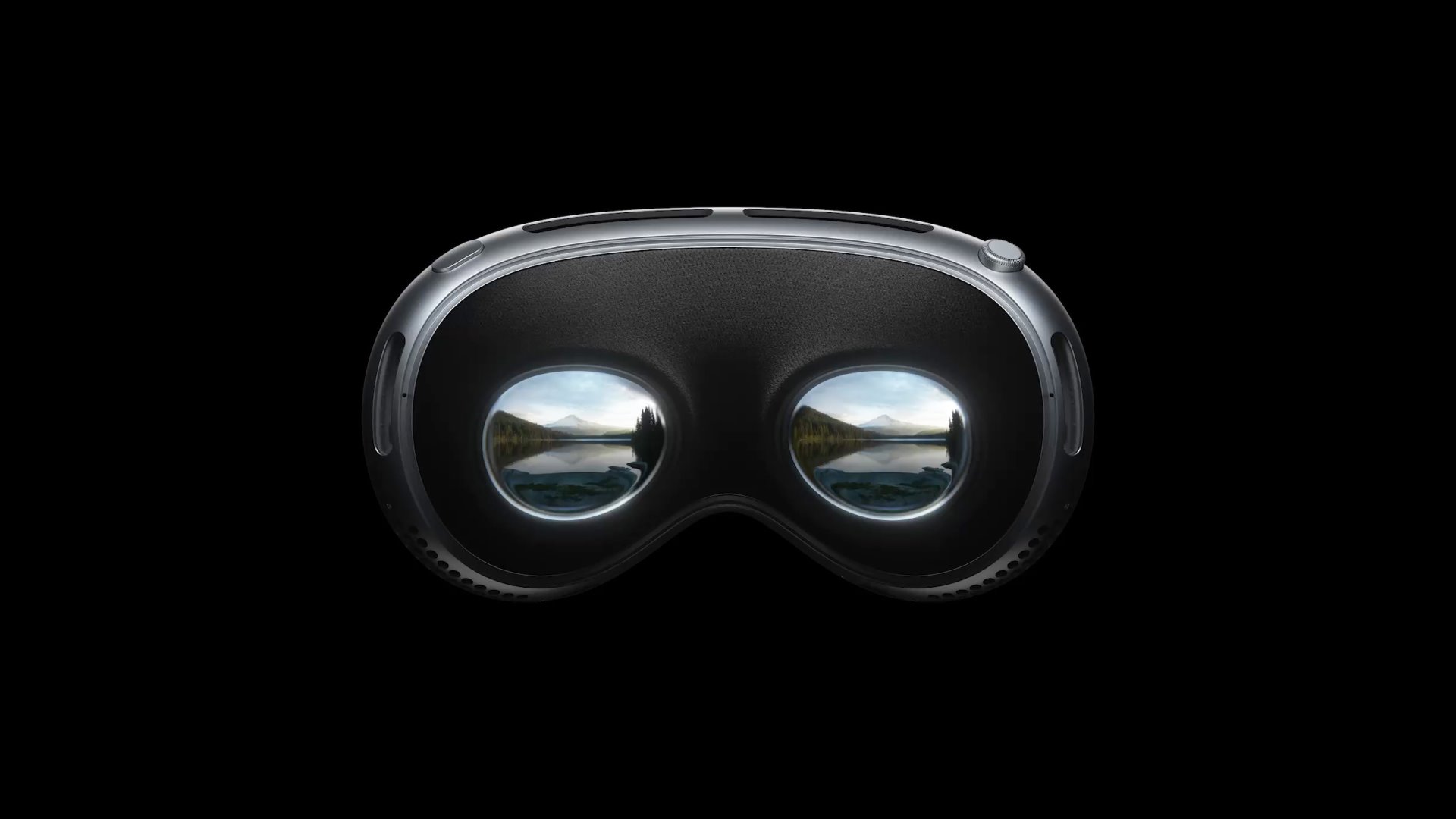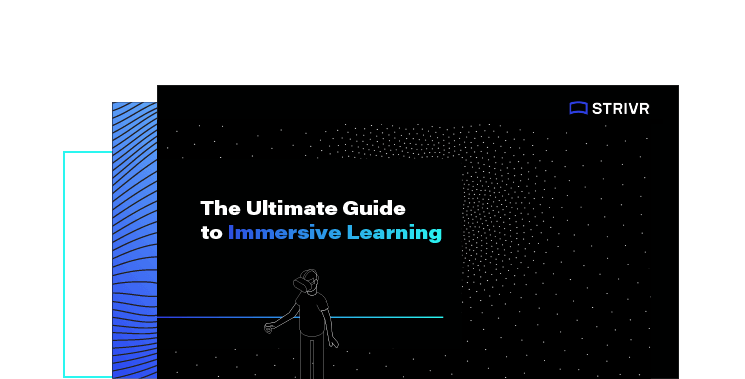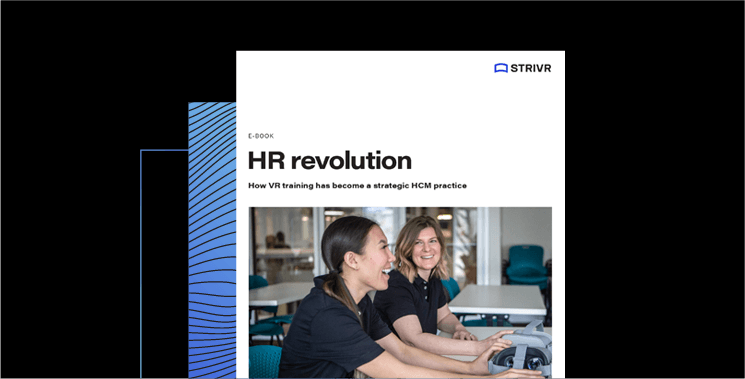Josh Bersin, founder of Bersin by Deloitte, is a global analyst in corporate human resources, talent and learning. He researches a variety of HR-related topics, from enterprise learning to employee experience to talent analytics.
In an interview with Strivr’s CEO, Derek Belch, Bersin shares key insights and trends that business leaders should be noting as they deal with a changing workforce, including how to better hire, onboard and retain employees. Here are the top five takeaways Josh Bersin defines as most important for L&D organizations today.
Watch the full interview with Josh here
01
The #1 human capital trend around the world is learning.
Deloitte’s 2019 Global Human Capital Trends (PDF) report puts it bluntly: “The number-one trend for 2019 is the need for organizations to change the way people learn.” Jobs are changing rapidly, yet somehow, the way we train employees has stayed rather fixed. Companies are starting to realize that the “old way” of training employees is broken.
But, as Bersin says, “Even though we have all these technologies, tools and content, companies are struggling to figure out how to create learning that fits into the flow of work. People are busier and busier and busier, and the economy continues to grow.”
02
There are new ways to engage employees with memorable learning approaches.
“I’ve always been skeptical of new technology, because I’ve seen all sorts of things mature at different rates than we’d expect. When I put on the VR headset and went through the football training, the Black Friday simulation and a job interview module, I was completely blown away,” Bersin said. He suggests that Immersive Learning in Virtual Reality (VR) presents a real opportunity for L&D leaders to better engage employees.
While many traditional learning methods lack deep user engagement, Immersive Learning is an experiential training methodology that uses virtual reality to simulate real-world scenarios and train employees in a safe and engaging environment. The method combines VR with advanced learning theory, data science and spatial design, and is far more engaging and memorable than traditional learning methods. Immersive Learning offers a new data set that is larger and more insightful than ever, so companies gain a better understanding about their training efforts and their employees.
“As an analyst, I hadn’t really paid attention to the space because I thought it wasn’t ready,” Bersin said. “Within a half hour I was completely convinced this was an enormously transformative technology.”
03
1:1 training is most effective but hardest to scale.
For most companies, Bersin says, the best way for their employees to learn is through simulated work experiences. Employees receive personalized, hands-on training in the moment. “When I went through sales training at IBM, we did simulated sales calls,” he said. “There was an instructor, a facilitator and someone who scripted it all out. Those were really effective programs, but they weren’t scalable. You couldn’t do them for all job roles.”
In-person trainings are not always realistic or scalable. Barriers include safety issues, business impact and sheer numbers of people who need to be trained. However, Bersin points to VR as a means to train effectively at scale.
“You can use VR across all job roles now, putting someone in a situation where they’re going to experience the work. There are hundreds of applications of VR,” he said.
Immersive Learning offers the effectiveness of in-person training with the ability to scale to many employees in different locations. This eliminates the tradeoff that L&D professionals often face between effective and scalable training.
04
Learning soft skills requires guidance and practice.
“When I think about all the things I’ve done, the most important learnings I’ve had are how to work with people, work in teams, deal with problems, and listen,” said Bersin. “If you actually look at the economics, we don’t have enough people for the jobs that are being created, and the skills that are mostly in demand are more sophisticated, complex-thinking skills, service skills and interpretation skills.”
Working well with people requires guidance and practice – like any other skill. As more roles become driven by interpersonal communication, it’s important that L&D leaders are thinking about how to give their employees practice to hone soft skills. Throwing them into the deep end, especially with customers, is simply not an option. “But that’s what VR can do in a safe way — put people in an uncomfortable situation where they’re working hard to learn something they didn’t realize they didn’t know how to do well,” said Bersin. Examples of soft skills training include practicing difficult conversations, building empathy and even mediating conflict.
With the right design and learning outcomes, Immersive Learning is an incredibly powerful tool for soft skills training in the workplace.
05
Human performance is a key differentiator for businesses today.
Like many business units, L&D is quickly being disrupted by technology innovations. Leaders are under pressure to keep up, and VR is one way to work toward digital transformation. In the long term, L&D’s ability to tap into the modern workforce and offer a differentiated employee experience is key to activating talent.
Bersin advised, “You don’t need to hire more people than your competitors; there aren’t enough people. You can’t build software faster than your competitors; they can hire the same software engineers you can. They can hire the same sales people. We’re in a stage of the economy right now where the only thing that will differentiate a company is the human performance equation.”
In other words, employee learning affects performance. Bersin continues, “Company-specific techniques, practices, cultural aspects and business processes are the magic to your success.” While there are many ways to train, “Immersive Learning institutionalizes [those things] in a way I’ve never seen before.”
Get all of Josh Bersin’s L&D insights
These are just five of the many insights that Bersin shared during our conversation with him.






